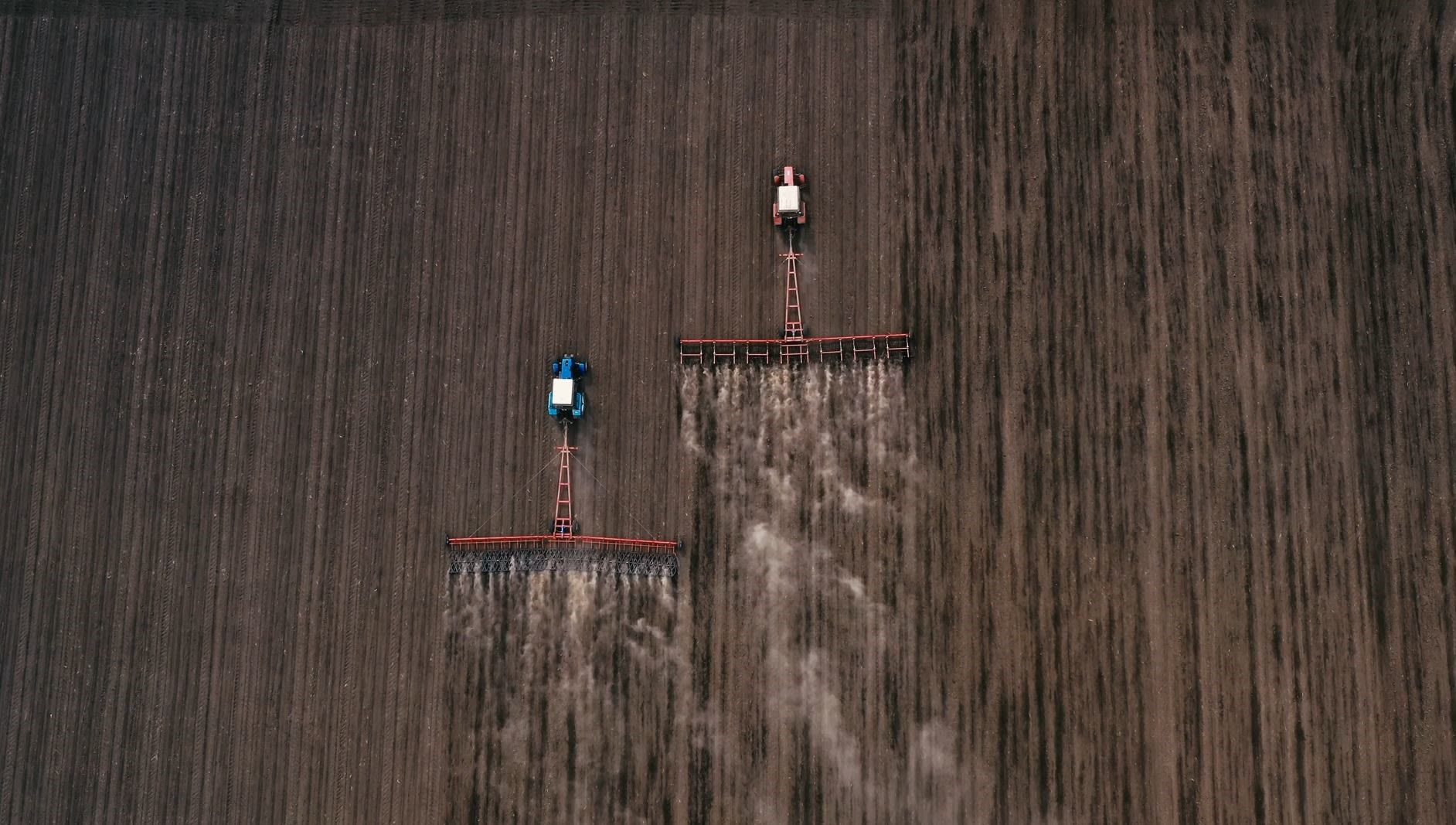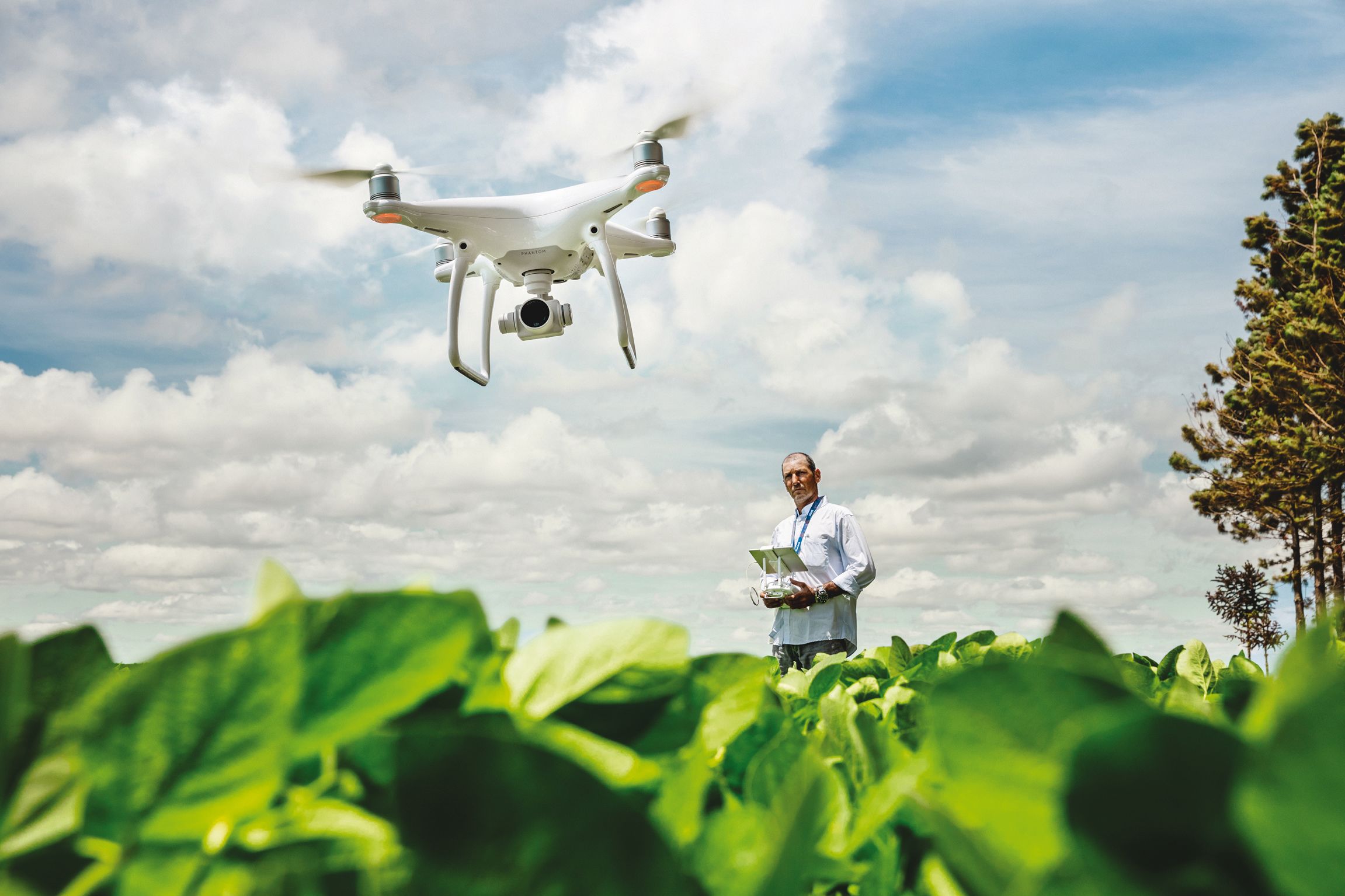SAVE OUR SOILS
To protect the planet's soils from collapse
– and thus ourselves –
we must radically change the way we farm
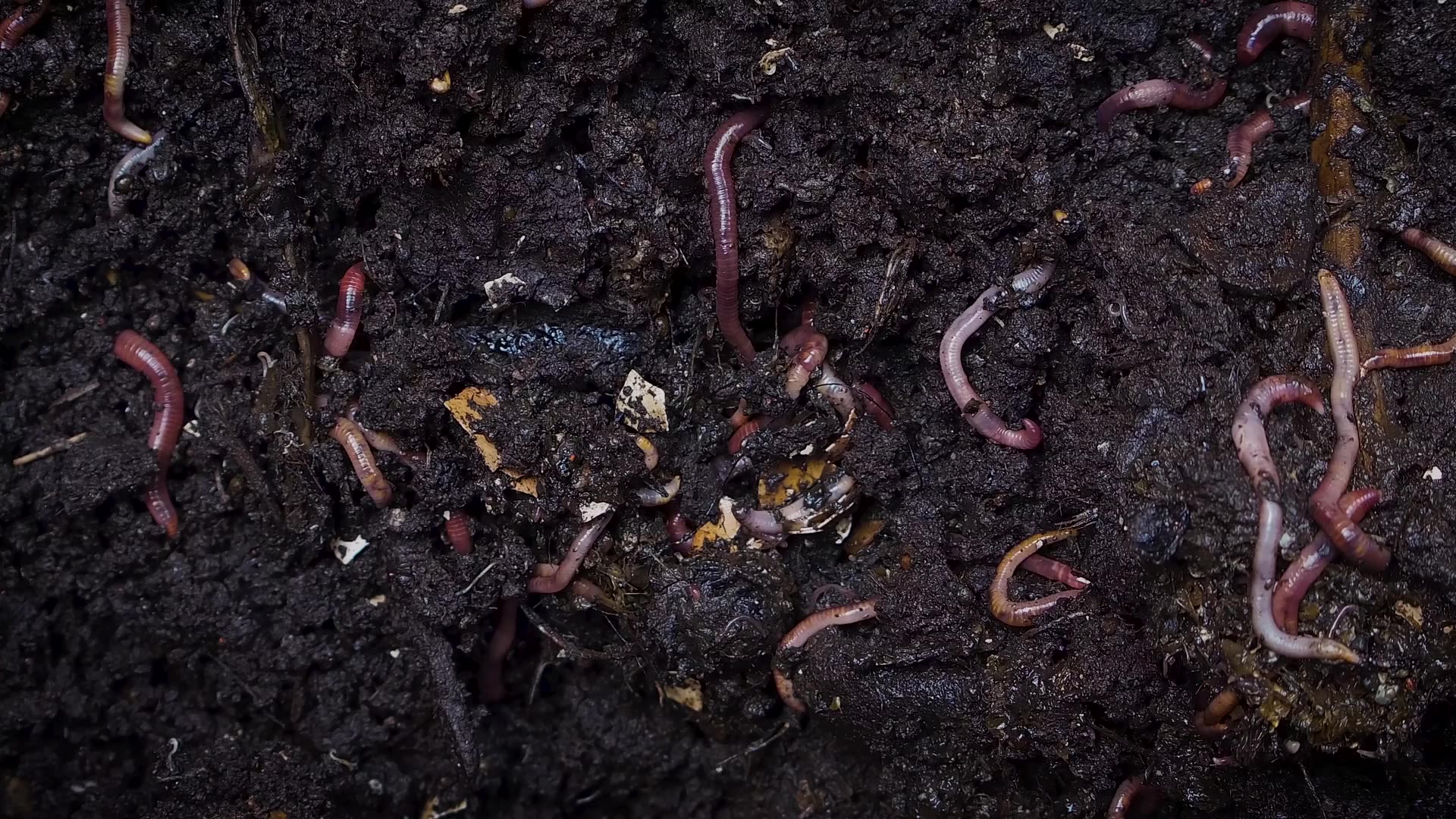
Chapter I
Losing Ground
„The very thin blanket between the groundwater level and the green plant cover, that’s the real wealth of a country.“
Raoul H. Francé, botanist (1874 – 1943)
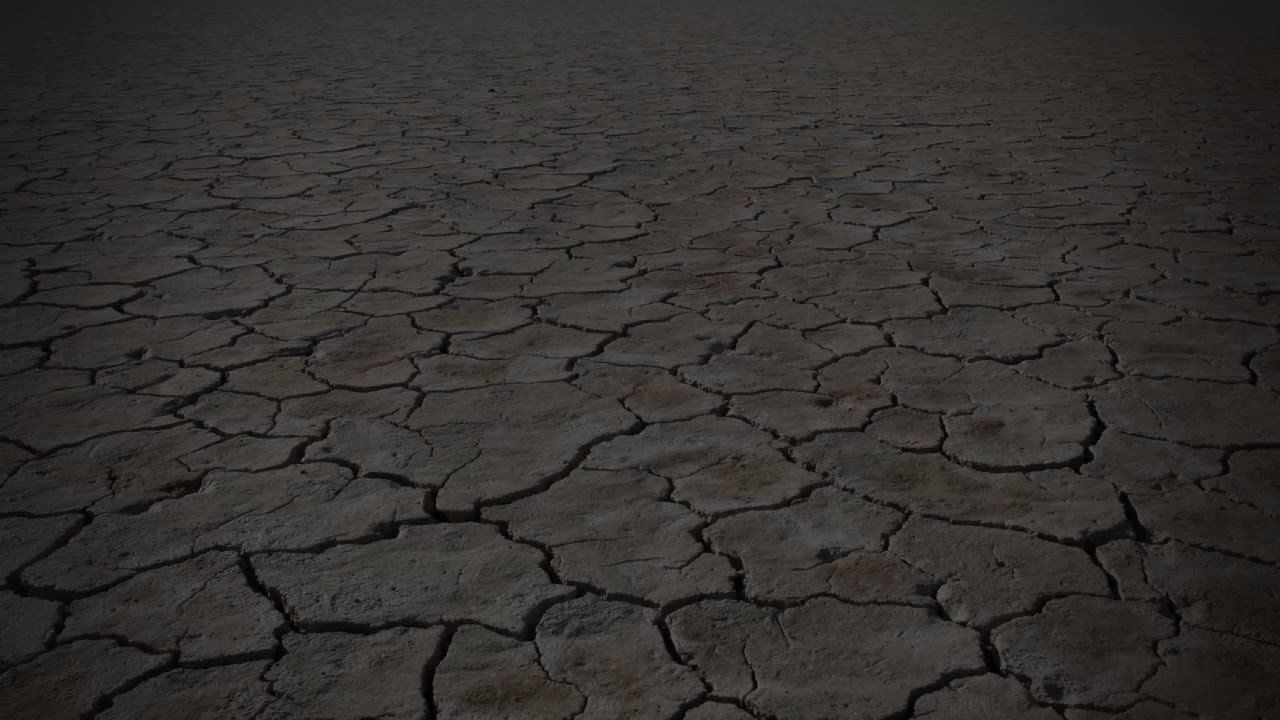
Humans had good reason to name their planet after the thin skin that surrounds it: Earth. It grew the plants to feed them as well as medicinal plants and others that gave them fibers for their clothes and a roof over their heads. Trees provided them with timber and firewood. Erda, the Germanic origin of the word, describes the place where the ancestors rest and from which all life emerges.
Adam, the name of the first human whom God, according to the bible, formed from clay, means man, derived from adāmā, the Hebrew word for earth. The Latin words for human, homo, and soil, humus, also share the same origin. In many creation myths, humankind was born in a paradisiacal garden. On all continents, earth goddesses shaped people's beliefs. And in most farming cultures, the furrow was considered a symbol of fertility. After all, it was the soil into which humans sowed the seeds of those plants that promised them food.
Whether fruit, vegetables and cereals that directly serve human nutrition, or feed such as grass and soy, which ends up in the troughs of our livestock: a whopping 95 percent of all our food has its origine in the soil. Yet, it is the very way in which we produce our food that literally pulls the ground from under our feet. Soils are sealed and compacted, tilled and drained, flooded with agrochemicals and exposed to erosion.







The ground under our feet has grown over millennia.
As long as forests and grasslands shaped the face of the Earth, a constantly growing layer of humus protected and nourished the soil.
Until humans broke the ground to cultivate fields.
With the intensification of agriculture crop yields increased on the still humus-rich soils.
We harvest more and more.
On ever larger areas.
The machines are getting bigger,
the crop rotations are becoming simpler.
As the humus layer disappears, the soil is impoverished. Rain and wind carry it away.
„Sixty harvests left“
The loss of soil did not just begin when food production became an industry. Agriculture is by definition an intervention in nature. It all started about 12,000 years ago when people laid out the first fields along the world's major rivers. The annual floods on the Euphrates and the Tigris, along the Nile and the Indus, washed fertile sediments from the mountains into the climatically favoured valleys. Soon the people there could harvest food in abundance. From the wild grasses they bred wheat and rice – grains that could be stored and rationed well. Thus, agriculture not only created the basis for the first urban civilizations. It also helped to establish the power of the first rulers. Those who controlled the granaries gained power over the people. As the now sedentary population grew, the need for arable land also increased. New soil had to be broken up outside the river plains. Forests were cleared, and people cultivated the land until the soil could no longer provide them with food. Then they moved on to make more land arable.
Nature can no longer keep up with this overexploitation. Not only is the land limited, soil itself is also a finite resource. We have long passed Peak Soil. Depending on climate, weather and geology, it takes up to five hundred years for even an inch of fertile topsoil to be formed from rotting biomass and decomposed rock. A farming system that mines the soils instead of regenerating them is doomed to lose ground.
Since the advent of our industrialised agricultural system, soil degradation has rapidly intensified. Over the past 150 years, the Earth has lost about half of its topsoil. Looking at the remaining arable land, a representative of the Food and Agricultural Organisazion (FAO) of the United Nations claimed in 2014 that the world had „sixty harvests left“. The end of agriculture cannot really be quantified with such absolute figures. In the temperate climate of Central Europe, for example, the soils are degrading less quickly than in the tropics, where it can be just a matter of a few heavy rains.
One thing though is certain: In order to feed the growing world population, yields must actually increase – by fifty percent over the next thirty years, according to the World Research Institute. Yet, the forecasts do not predict more, but thirty percent lower yields, due to increasing droughts and floodings. We need soils that can buffer the extremes of the escalating climate crisis. However, around one third of the world’s agricultural soils are already considered degraded. The FAO has issued a clear warning: If our soils continue to suffer at the current rate, up to ninety percent could become degraded by the middle of the century. By then, ten billion people will want to harvest enough from those damaged soils.
Over the past forty years alone, the world has lost around a third of its arable land. If these soils had been farmed differently, 1.5 billion more people could be fed – that is almost twice as many as the roughly eight hundred million people who suffer from hunger and malnutrition every day. Yet, nothing of value can thrive on this land any longer. The fertile topsoil, this thin layer in which our crops thrive, has inevitably disappeared. The end of any degradation process is marked by erosion: As soon as the soil lays bare and unprotected, it is blown away by the wind and washed away by the rain.

Erosion causes around 24 billion tons of soil to be lost every year globally. That’s like digging the federal state of Hesse one meter deeper.
Erosion causes around 24 billion tons of soil to be lost every year globally. That’s like digging the federal state of Hesse one meter deeper.
If this idea may seem too abstract, a walk in the countryside might help. Many dirt roads are situated higher than the fields that they cross. So in order to drive the tractor to his field, the farmer has to go down, in some cases half a meter or more. These lowered fields are the result of centuries of tillage and the consequent erosion.
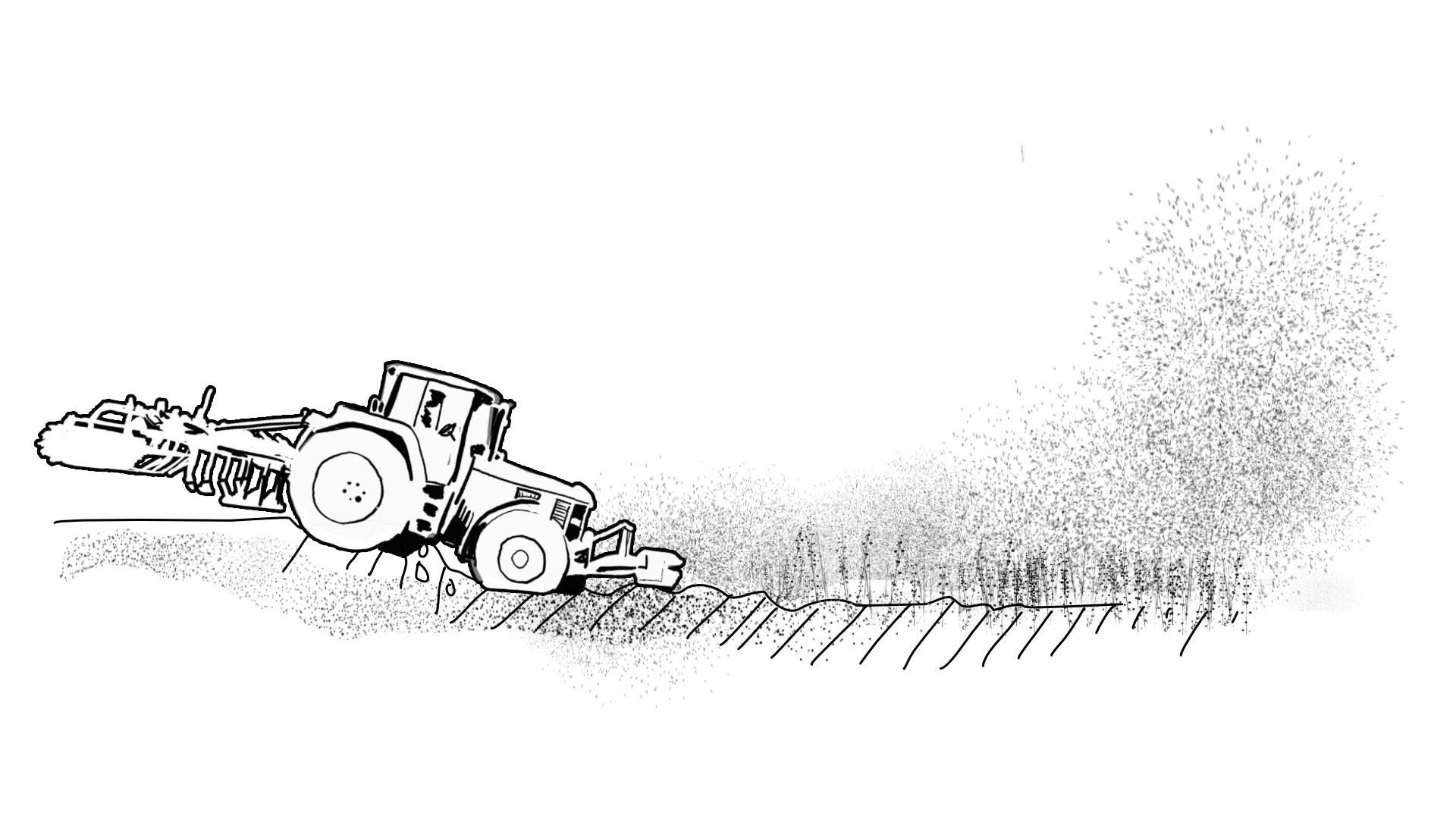
Decline over generations: In temperate climates, soils erode slowly but steadily.
Decline over generations: In temperate climates, soils erode slowly but steadily.
As the soils of Central Europe are deep, their collapse streches over generations. But in the end, the result will be the same: the final stage of degradation is the desert. In Southern Europe, it seems to be spreading inexorably. Crop yields are already collapsing in many regions. The eerie interaction of climate change, water scarcity and the overconsumption of soils has long become a reality in many places. Two thirds of the Spanish mainland are eroding.
In Italy, salt water from the Adriatic sea pushes twenty kilometers inland through the dried-up delta of the Po river, causing one of the most important cultivation areas of the country to become salted.
The main reason for salinization, however, is the artificial irrigation of crops, which already consumes 70 percent of the world’s fresh water reossurces. Fresh water also contains salty minerals, albeit in small quantities, and these salts are deposited when the water evaporates in the heat. In extreme cases, a white crust covers the soil, until nothing will grow there any more. The purpose of irrigation – to make the land fertile – has turned into its opposite. Europe’s vegetable garden is crumbling into dust.

Two thirds of all soils in the European Union are considered degraded, says the European Commission.
Two thirds of all soils in the European Union are considered degraded, says the European Commission.
It would not be the first collapse of this kind. In his book Dirt – The Erosion of Civilizations, geologist David R. Montgomery vividly describes how entire civilizations have perished with their soils: from the peoples in what was once called the fertile crescent where there is not much but desert today, to the empires of the Romans and the Mayas. There is little evidence to suggest that our industrialized farming system would be any more resilient. We are feeding more and more people with a system that is based on the exploitation of a fragile basis. Soil is, as former German Environmental Minister Klaus Töpfer put it, „the forgotten ecological resource par excellence.“
The soil crisis is closely interlinked with the other megacrises of the Anthropocene. Healthy soils can store enormous amounts of greenhouse gases. As the largest terrestrial carbon sink, they bind almost twice as much carbon as all forests combined, only the world’s oceans store more. At present, however, agriculture is more of a climate killer than a climate saviour: Over-fertilization and intensive soil cultivation emit large quantities of greenhouse gases into the atmosphere.
The increasing droughts dry out the soils which therefore store less and less water. A vicious circle.
Healthy soils, on the other hand, absorb water like a sponge. They store it for periods of drought and prevent flooding during heavy rains. Soils are nature's solution for climate-resilient landscapes.
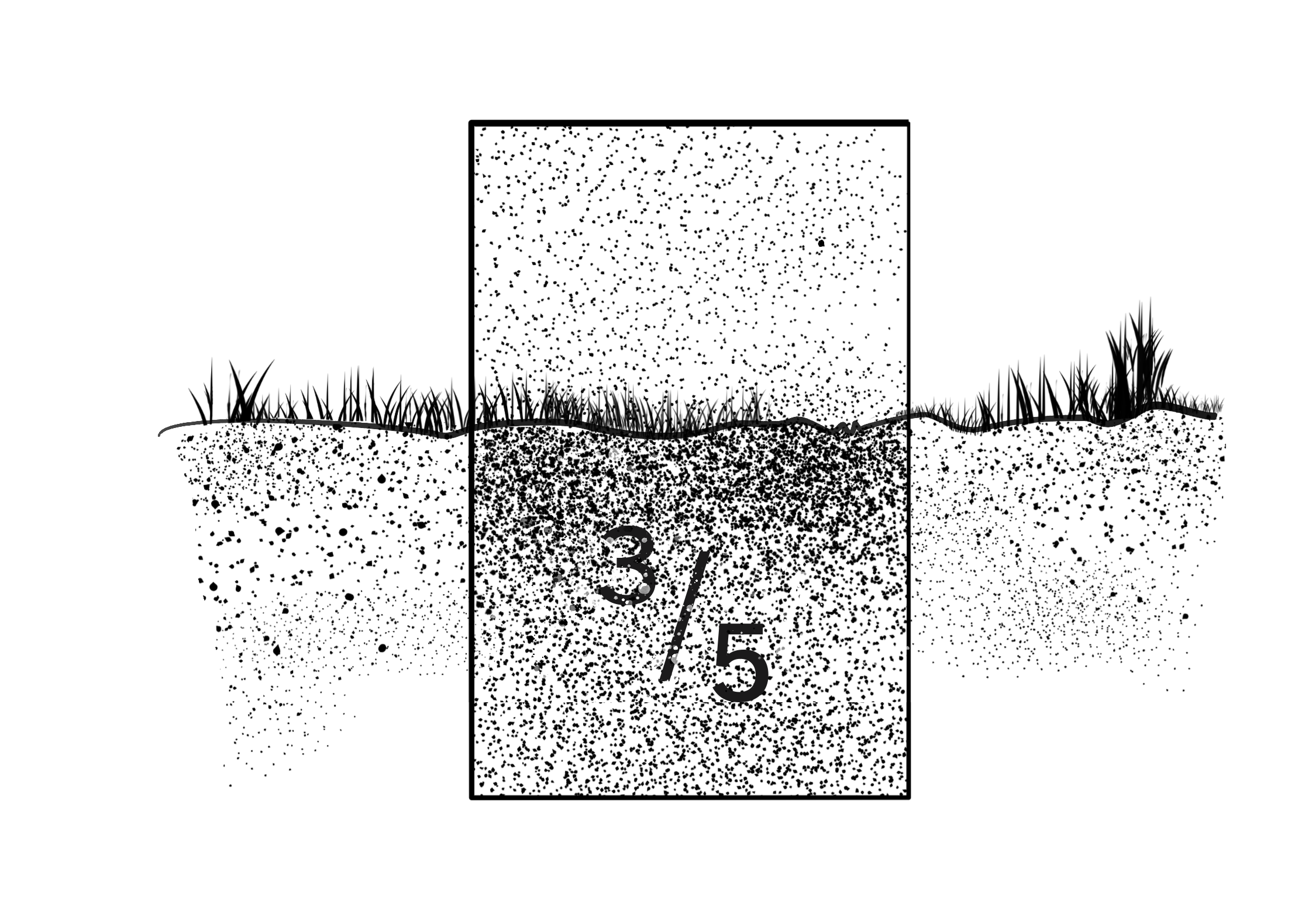
A recent study estimates that 59 percent of all species live underground.
A recent study estimates that 59 percent of all species live underground.
The mass extinction of species also rages in the soil, the world's hidden but most diverse ecosystem. Ploughing, pesticides and over-fertilization damage life in the soil. The more depleted the soil life, the poorer the soil. How much more damage does the soil ecosystem tolerate before it disintegrates?
Conserving the world's soils is not only the key to fighting hunger. Protecting soils also helps us to fight the climate crisis, water scarcity and the extinction of species. This is therefore not just a story of decline, but also a search for alternatives. Are there farming and food systems that enable us to use soils sustainably? As existential as the crisis of soils is – many solutions are there already.
This story is told by farmers and scientists, by politicians and by lobbyists of the agricultural industry. They will guide you through the following chapters in which they take you through their fields, greenhouses and laboratories as well as through the tortuous paths and paragraphs of soil politics.
„Our goal is not to become the next big farming company.
I would much rather like to see more gardens like this one popping up in every village.“
Jasper de Wit, vegetable farmer

IIn the mountainous Weserbergland region of Central Germany, the fields are spread out in the wide valleys like a patchwork carpet. The soils here are loamy and deep. In one of these valleys lies the village of Godelheim, close to the city of Höxter with its medieval center, the capital of this district which has the lowest population density in otherwise densely populated North Rhine-Westphalia, the most populous federal state in Germany. The other side of the Weser river is already part of Lower Saxony, but there is not much more going on over there either. This stretch of land is known to be good for hiking, biking – and farming. The term agricultural industry doesn't come to mind here, too romantic seems the pitoresque landscape dotted by its many timber-framed farms.
Anna Lammert and Jasper de Wit have been breathing new life into one of these old farms since 2017. They plastered the walls of the venerable main house with clay, the outbuildings and stables needed a new roof. Thanks to many helping hands from the neighborhood, the young couple was able to build a farm that has become a role model for many others. They were among the first to open a market garden in Germany. The market garden movement has its origins in North America, in recent years thousands of such small farms have emerged all over the world. What unites them is their love for the soil. They work their soils in accordance to the latest state of research: not at all. Their premise is called „no dig“. No tilling, no ploughing, no milling, no turning over nor otherwise disturbing the soil – but regenerating it.
On a piece of land that covers barely more than half a hectare, more than fifty varieties of fruit and vegetables thrive. The garden is the result of many philosophies that Jasper de Wit leans to: it all started when he learned about permaculture, a term under which ancient, indigenous knowledge has been transformed since the 1970s to enable a sustainable life in modern times. The horticultural ideal of permaculture is a permanently growing, as diverse as possible, self-stabilizing ecosystem. Very similar is the idea behind regenerative agriculture: to produce food while reviving the landscape instead of draining it. The resulting merger between these two philosophies is what Jasper de Wit calls „biointensive agriculture“. He says: „Organic and intensive, isn't that a contradiction in itself?“ It's a rhetorical question that he likes to ask visitors when he shows them around his greenhouses and the tidy rows of vegetables.
Jasper de Wit says: „Because our soil is becoming more and more lively and healthy, the vegetables also taste better.“ He sets up a simple equation: healthy soil, healthy plants, healthy food, healthy people.
Life in the soil does in fact have significant impact on the taste and the aroma of our food. When researchers in Italy compared wheat flour, they found significant differences in the taste profile of the bread baked from the flour – depending on whether or not the wheat seeds had been inoculated with beneficial soil microbes before sowing. Bread made from the inoculated wheat had a higher taste intensity, better elasticity and a better crumb structure. These characteristics were not only perceived by a group of specially trained food sensory experts, but could also be confirmed by an electronic nose, a device which measures odors.
Other studies have shown that microorganisms play an important role in producing secondary plant metabolites that have positive effects on human health, especially on our gastrointestinal tract. Tasty vegetables contain particularly high amounts of these phytochemicals. But there are fewer and fewer of such nutritious vegetables available because the nutrient density of our food decreases. Although we produce more calories than ever before, the food we eat today contains significantly less vitamins, minerals, proteins and other nutrients than it did just a few decades ago. A research team compared data from the US Department of Agriculture from 1950 to 1999. In all 43 vegetable species examined, the contents of six nutrients had decreased, some of them significantly. On average, at the end of the millennium the vegetables contained six percent fewer proteins and up to 38 percent less vitamin B than at the beginning of the records. Further studies have come to similar conclusions on all continents. You could say that one has to eat two cucumbers today to consume the same amounts of trace elements that a few decades ago were covered by eating only one cucumber.
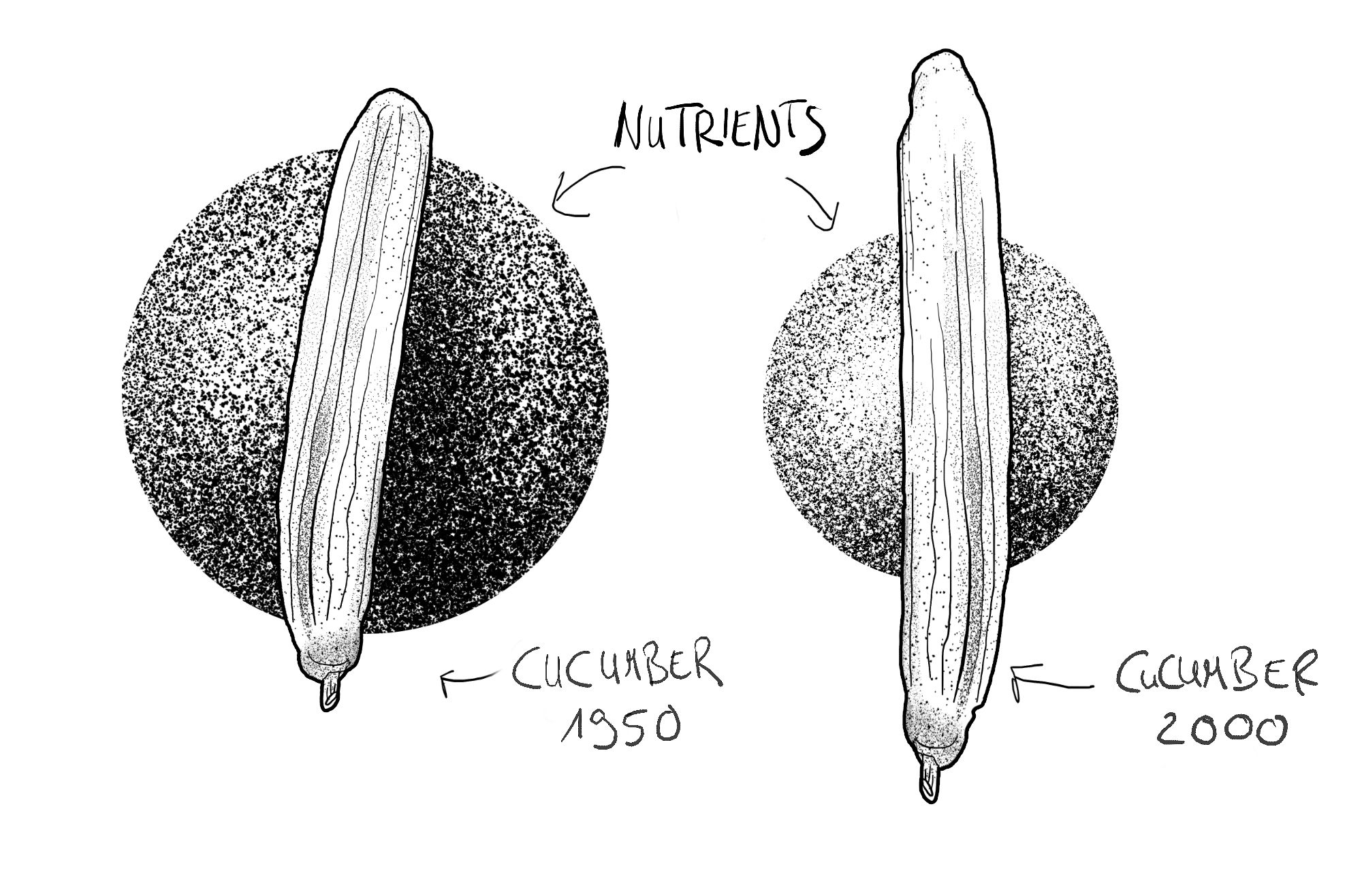
If you eat a balanced diet, you still receive enough nutrients. Yet, not everything that satiates is actually nutritious. Researchers warn of a silent health crisis caused by a chronic lack of vitamins and minerals. Globally, more than two billion people already suffer from this "hidden hunger".
If you eat a balanced diet, you still receive enough nutrients. Yet, not everything that satiates is actually nutritious. Researchers warn of a silent health crisis caused by a chronic lack of vitamins and minerals. Globally, more than two billion people already suffer from this "hidden hunger".
Some studies blame modern plant breeding in particular for this nutrient decline. The new varieties grow faster and bigger, they are more sweet or juicier, but their nutrient content has not kept up with this development.
However, the depletion of soils also plays a major role in nutrient depletion, other researchers stress. A 2020 study from the journal Nutrients even blamed the depleted soils to contribute to a widespread health problem: magnesium deficiency, which affects almost half of the US population. Possible consequences can be high blood pressure, diabetes and neurological disorders.
Conversely, it seems, that if the soil is healthy, so too are we. It has long been known that children, who dig in the dirt and thus come into contact with soil microbes, are more likely to develop a strong immune system. But life in the soil may affect human health even much more than previously thought. In a 2019 study, researchers at the University of Natural Resources and Life Sciences in Vienna described in detail how the microbiome in the soil and the microbiome in the human intestine have closely co-developed over the course of evolution. However, since people are less and less in contact with soil, while hygiene measures, the use of antibiotics and a low-fiber diets with processed foods are increasing, there are less and less useful microbes found in most human bodies. „At the same time, loss of soil biodiversity is observed in many rural areas“, the researchers from Vienna wrote, blaming „the increasing use of agrochemicals, low plant biodiversity and rigorous soil management practices. These developments concur with an increase in lifestyle diseases related to the human intestinal microbiome.“ According to their hypothesis, the microbiome in the human gut system as well as the microbiome in the soil and at the roots of plants should be considered „as ‘superorganisms’ which, by close contact, replenish each other with inoculants, genes and growth-sustaining molecules.“

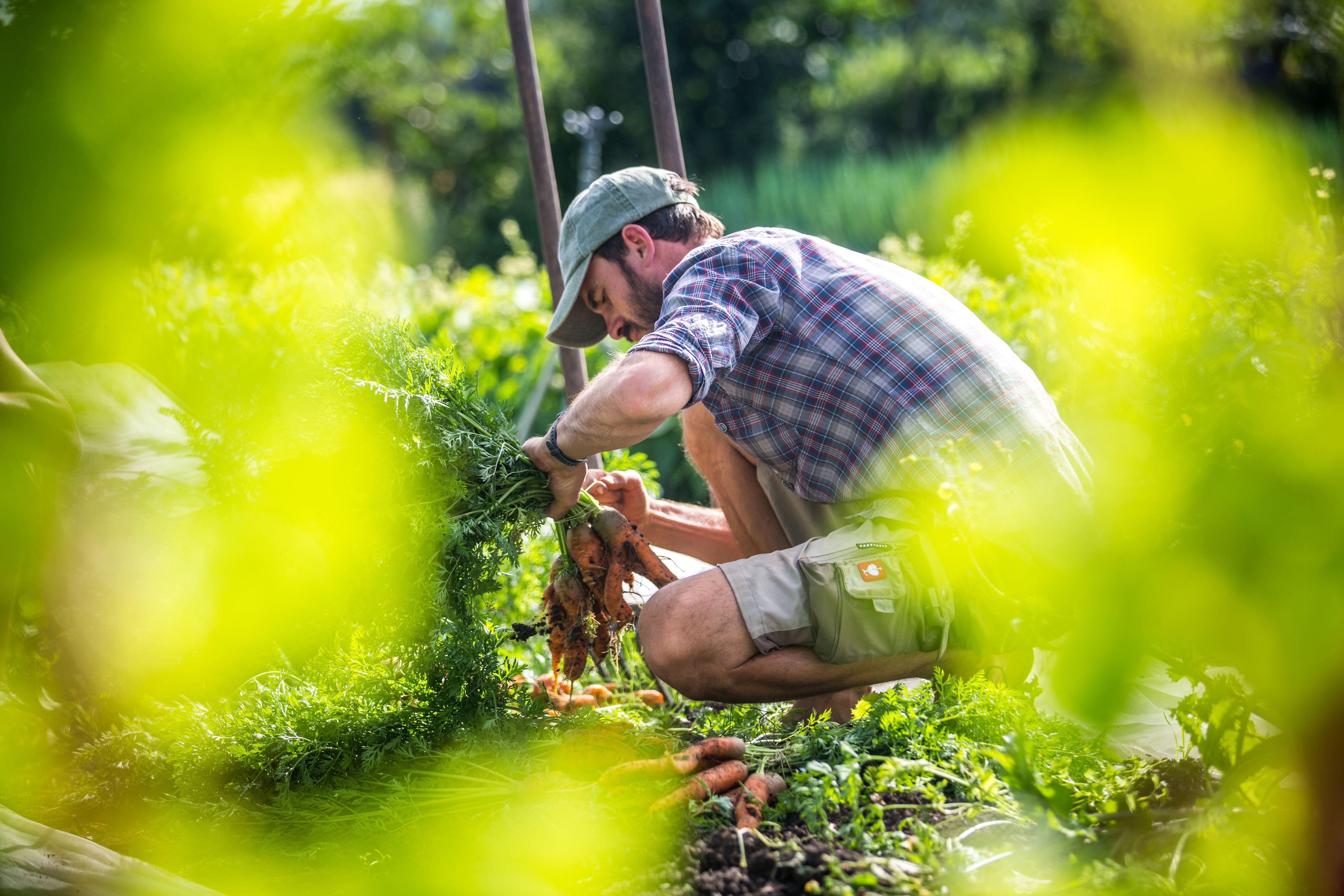

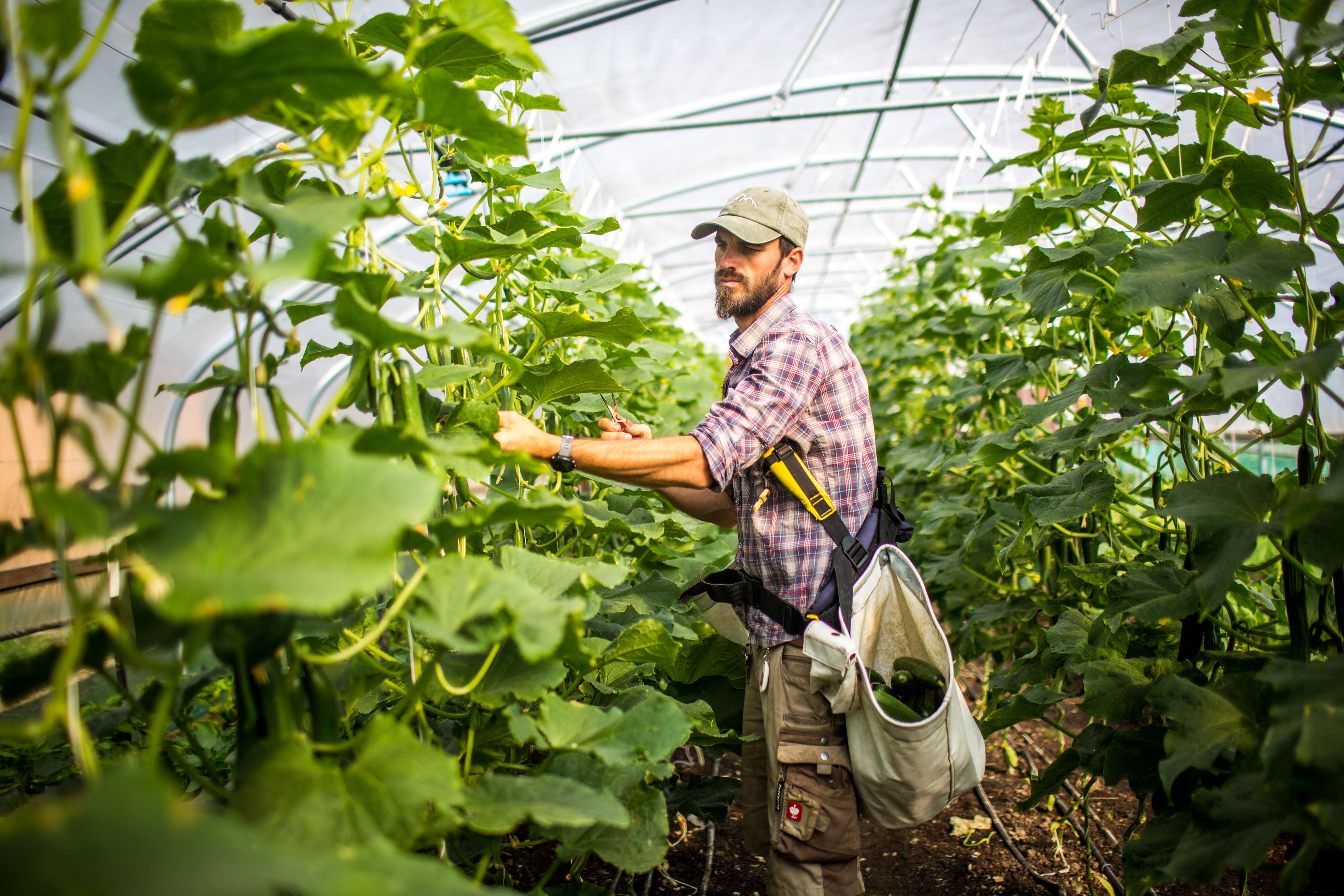

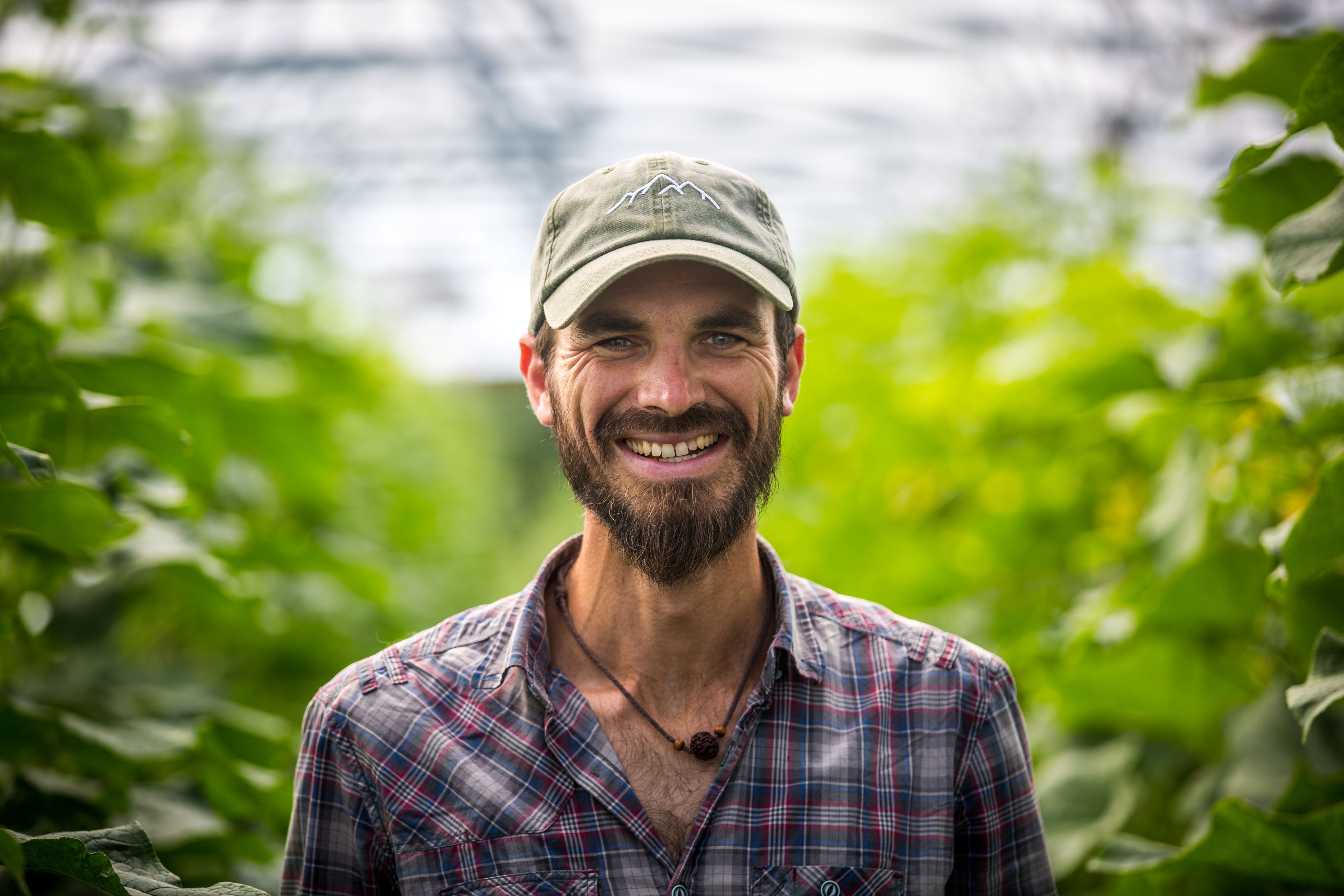


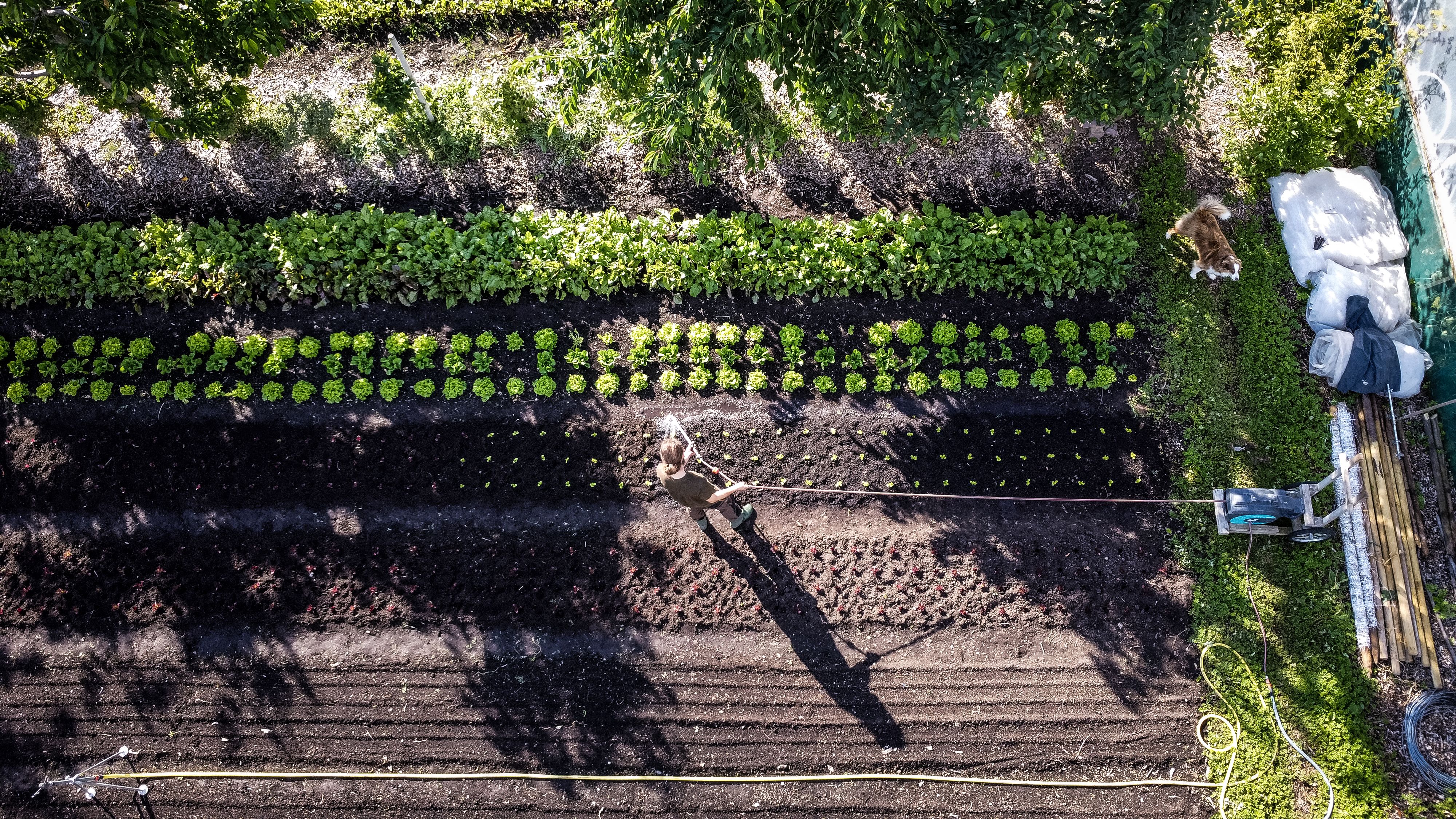
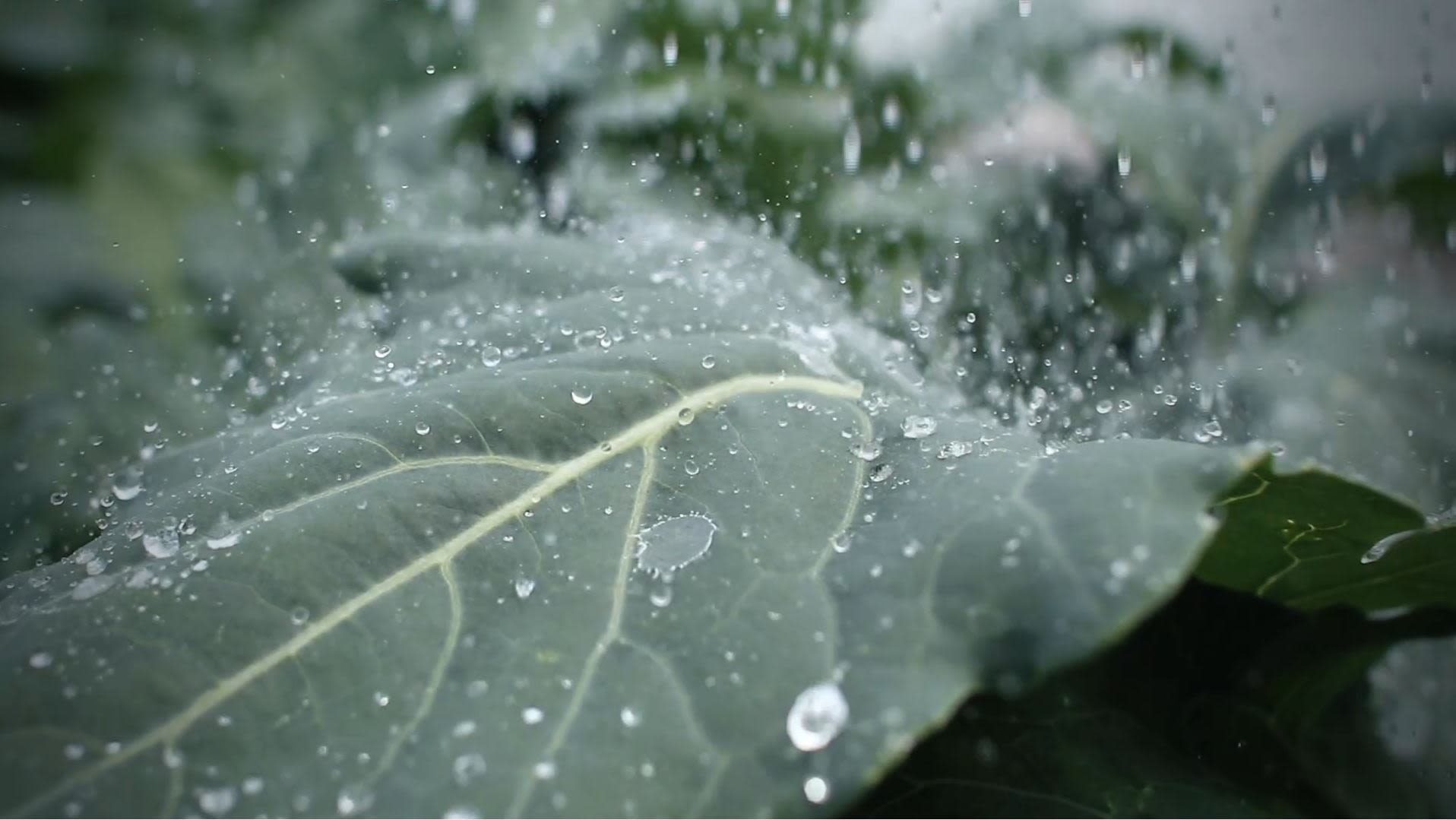

Life Underground
When it comes to biodiversity, rainforests or coral reefs come to mind first. The most diverse habitat, however, is hidden directly underneath our feet. In a handful of healthy soil there are more living beings than people on this planet. Myriads of bacteria, fungi and algae, worms, beetles, woodlice, springtails, nematodes and other creatures form a highly complex ecosystem, the edaphon. Taken together, all these small and large soil organisms create considerable biomass: up to 15 tons of live weight under one hectare of land.

Soil life under one hectare of healthy grassland can weigh about as much as twenty cows who graze on that same area.
Soil life under one hectare of healthy grassland can weigh about as much as twenty cows who graze on that same area.
In healthy soil, beneficial organisms and pests keep the balance. If the soil life is healthy and diverse, plants are therefore less susceptible to diseases and damage. But all these organisms are not just an indication of a healthy soil – ultimately, they are soil, as they transform the dead masses of rock and the remains of plants and animals into a fertile habitat in the first place.
Together, the soil organisms decompose organic material such as leaves, straw or dead roots into minerals such as phosphorus or potassium that plants need for their growth. These nutrients only become available to the plants through the digestive work of the soil organisms. The soil life literally feeds the plants. For example, mycorrhizal fungi and other organisms settle in the rhizosphere, those couple of inches of soil around the roots or even on and inside them. In return for the nutrients that they provide to the plants, the soil organisms receive energy-rich root excudates such as carbon compounds and amino acids, which they cannot produce on their own. When a plant dies, it is decomposed by the soil life and the cycle begins again.
The nutritional basis for all life in the soil is carbon. The soil organisms obtain it either by eating dead organic material or from living plants that carry out photosynthesis. The plants release some of the sugar that they produce – energy-rich carbon compounds – to the microorganisms in the soil via their roots. Some of it is metabolized by the soil life and „exhaled“ as carbon dioxide, which escapes back into the atmosphere. The rest, however, is converted into more stable carbon compounds in the digestive system of worms, woodlice and other organisms, who bond it with clay particles and store it in the soil: in humus, the most fertile layer of soil which is full of organic matter.

The soil organisms decompose dead biomass, turning it into humus which acts like a sponge. Only if the humus layer remains moist, more water can be absorbed. Humus also stores carbon and nutrients.
The soil organisms decompose dead biomass, turning it into humus which acts like a sponge. Only if the humus layer remains moist, more water can be absorbed. Humus also stores carbon and nutrients.
As rain approaches and the air pressure drops, the pores of the soil open up. Healthy, humus-rich soils absorb rainwater and store it for the plants. Some animals such as earthworms dig tunnels and create macropores through which water can easily infiltrate the soil. Other organisms then filter and purify that water. Thus, in addition to food production, healthy soils have many other valuable functions, providing so-called ecosystem services.
Scientists stress that they are only just beginning to understand all those functions performed by the living beings under the earth. „We know less than two percent of all the soil species by name, most of them have not yet even been scientifically described,“ says Nico Eisenhauer, who studies the life in the soil at the Center for Integrative Biodiversity Research in Bad Lauchstädt near Leipzig.
„Life in the soil is like a huge library. While we've just started to read a few of those books, the library is already ablaze.“
Nico Eisenhauer, soil ecologist
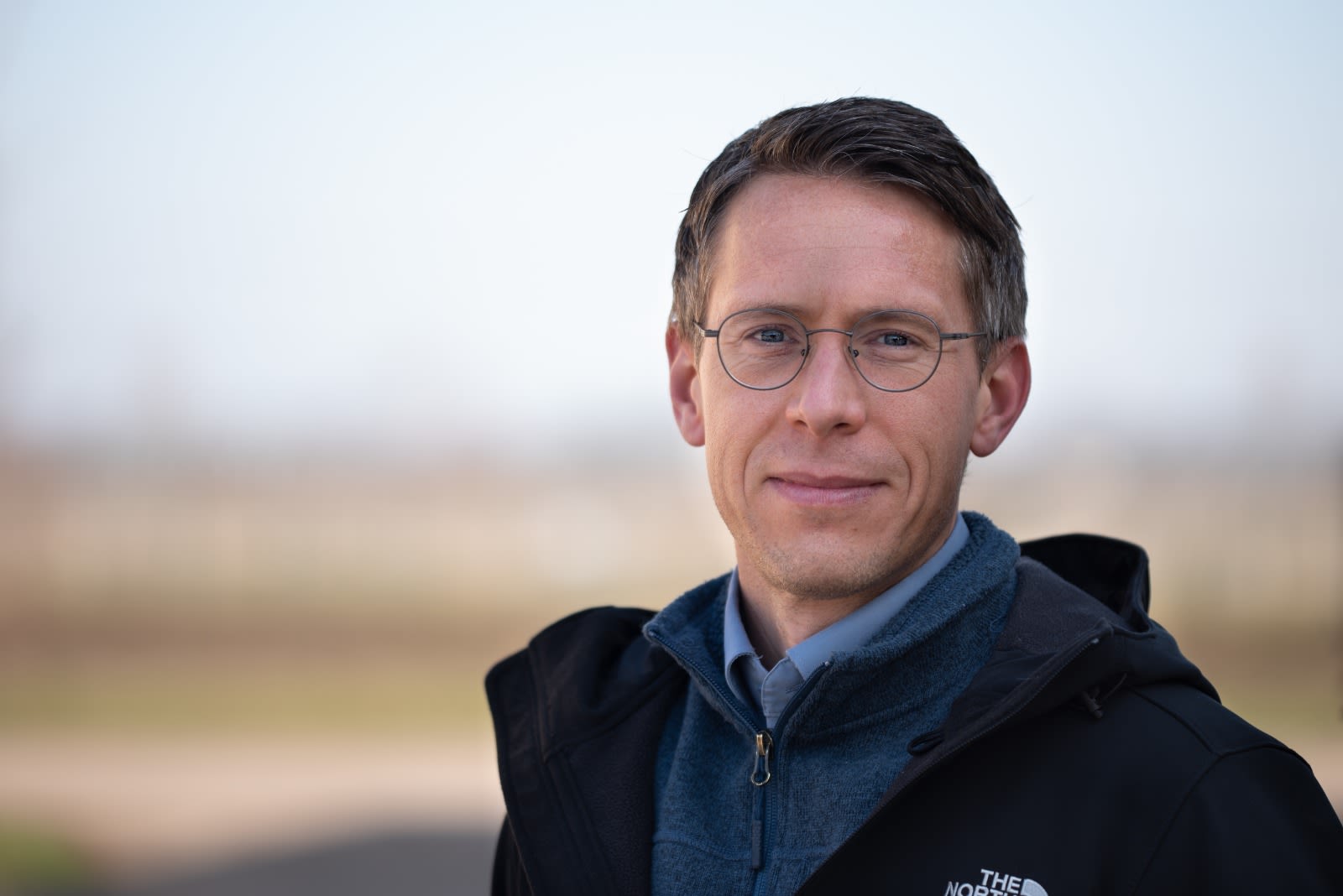
Eisenhauer documents a little known mass extinction. On the outskirts of Bad Lauchstädt, the 43-year-old studies how land use affects soil life. Under the project name "Ecosystems of the Future", he has been analyzing soils in an open-field experimental arrangement over the past ten years: plots of arable land and grassland strips, each 16 by 24 metres, all managed in the way that is common in the region: with tilling, pesticides and mineral fertilizers in the fields; manure sprayed onto the grassland to fertilize the rapidly growing grasses that are mowed three times a year and then processed into lifestock fodder. For comparison, the whole setting once again but managed under organic farming: with fewer pesticides and without artificial fertilizer in the fields; an unfertilized meadow with many wild herbs grazed by sheep instead of the cutter bar.
The long-term trial in Bad Lauchstädt is the world’s largest field experiment to study the effects that the climate crisis will have on agriculture. For this purpose, steel beams were installed over the test strips, covering the site like a huge greenhouse.
This construction allows the roofs over the fields to be opened and closed. This way, the researchers can manipulate the microclimate by keeping out the rain. But the fields can also be artificially irrigated by a sprinkler system.
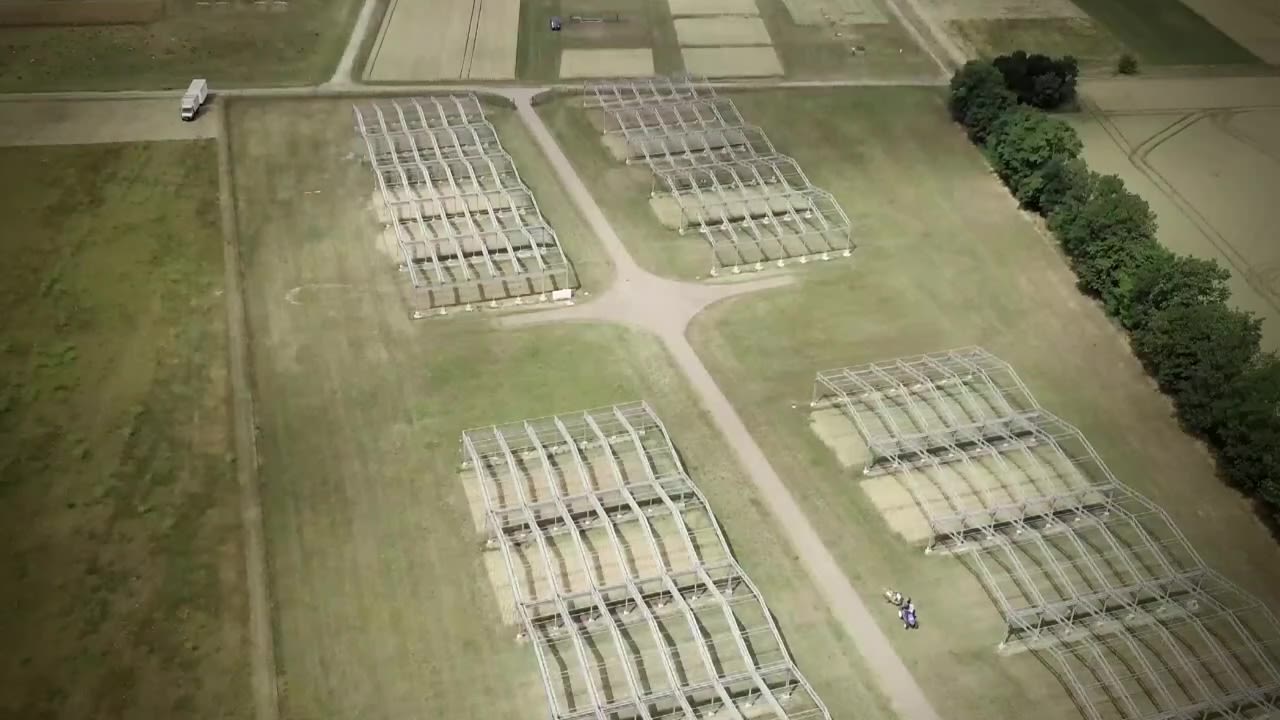
The Stress Test
„We're simulating the climate that we expect to expierence in the period between 2070 and 2100,“ Eisenhauer explains. „Hot and dry summers, but more rain in spring and autumn.“ In summer, the plants receive twenty percent less water, which causes artificial drought stress. At night, the roof remains closed, trapping the heat that is stored in the soil during the day and releasing it more slowly.
The temperatures reported by the weather forecast are measured at a height of two meters. The soil, however, can heat up much faster and more strongly – especially if it is uncovered and therefore unprotected, as is the case after harvest. In particularly hot regions of the world, such as India, bare soil has already heated up to more than sixty degrees in the midday sun. At such temperatures, proteins coagulate, the soil organisms are literally cooked. In Germany, too, heat and drought are affecting soil life, Eisenhauer says. Reality has already overturned the scientists' climate models.
„The drought summers of 2018 and 2019 have disrupted the composition of species in the soil. Some species have disappeared almost completely, especially those who lived in the topsoil which has been completely dried out in some fields. We don’t know yet whether nature will rearrange that old balance.“
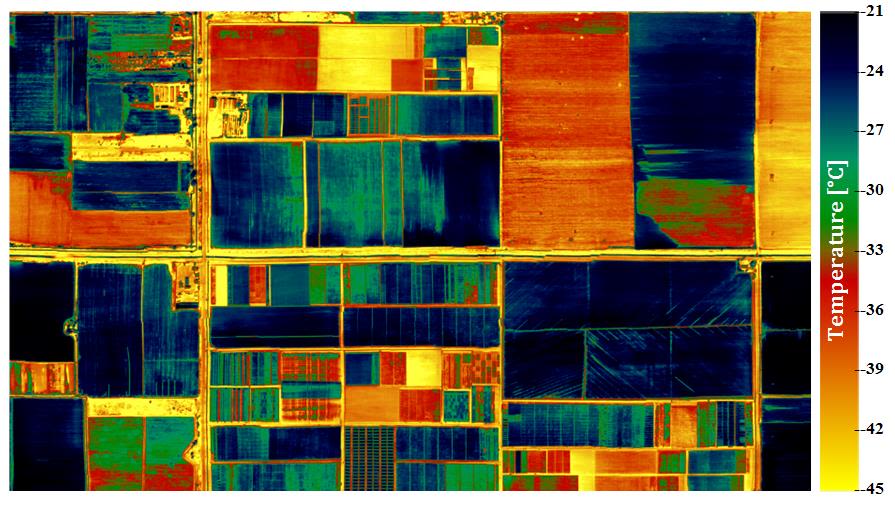
The less they are protected by vegetation, the more the sunlight heats up arable soils.
The less they are protected by vegetation, the more the sunlight heats up arable soils.
It is a stress test that conventional agriculture in particular fails to pass. The research results from Bad Lauchstädt are disturbing: The yields of winter wheat, for example, have broken down under the artificial drought. On the organic comparison fields, the harvest losses are far less considerable. What is evident on a small scale in Bad Lauchstädt is becoming more and more obvious in many places around the world: The ever intensifying farming system has passed its zenith.
Despite increasing efforts, yields of important staple crops such as wheat and corn are stagnating in many parts of the world. In some regions, harvests are already on the decline. According to the FAO, this is caused by a combination of mutually exacerbating factors: the loss of soil fertility, the decreasing efficiency of pesticides and fertilizers, as well as increasing pest pressure and climatic stresses.
The extent to which agriculture is already affected by the increasingly unpredictable climate was once again demonstrated in Germany in 2023. In the rainy summer, which followed a too dry spring, Cem Özdemir, Federal Minister for Food and Agriculture, said that the climate crisis had turned harvesting into „a lottery game“.
Soil degradation causes global crop losses of up to 523 billion Euros per year
For Eisenhauer, one thing is certain: „We should not strive for maximum yield every year, what we need are stable harvests in the long term.“ His explanation for why organic farming copes better with drought is that thanks to their higher humus content, the organically managed soils can better store the available water. In addition, the rich soil life helps the plants to cope with drought stress. Eisenhauer and his team have examined hundreds of soil samples in their laboratory. In Bad Lauchstädt, there are considerably more species of bacteria, fungi and insects in the organically managed soils than in the conventional comparison plots.
What exactly is it that affects biodiversity in intensively cultivated soil? Eisenhauer says that too much fertiliser is applied to most conventional fields. „The plants become lazy,“ he explains. Usually, plants would host many different organisms at their roots which provide them with nutrients. But when the plants get their nutrients fed in the form of artificial fertilizers, they are no longer dependent on the symbiosis with the soil organisms. The plants then no longer provide the soil organisms any substitutes. Many soil organisms therefore go hungry. While organic farming feeds the soil life with compost or other organic matter, most organisms can do little with mineral or synthetic fertilizers, as they are used in conventional agriculture. Put simply, while the soil is over-fertilized, life in the soils starves.
Add to this the pesticides that damage many soil organisms, plus the plough that literally turns their habitat upside down, as well as the increasingly heavy machines that compact it, and you have a soil that is degenerated to nothing more than a mere substrate. The thing is that even sick, increasingly lifeless soils can provide good yields for a while – as long as they receive the external inputs that are used to sustain industrial agriculture.
The Oligopoly at the Rhine
A story about the state of our soils is therefore also necessarily a story about the agrochemical industry. If you follow the Rhine upstream, the journey takes you past the headquarters of the three European chemical giants. The research that is done in their labs is about to shape the future of the global agrifood system. The global market for pesticides alone is expected to grow from just under 80 billion to almost 130 billion euros over the next ten years.
Monheim am Rhein is home to the CropScience division of Bayer, the world's largest agrochemical company since it acquired Monsanto in 2018. We will return here later.
BASF, still the world’s largest chemical company in terms of sales, has its headquarters in Ludwigshafen am Rhein.
The third among the oligopoly of the European agrochemical industry is based in Basel, where the Rhine marks the border with Switzerland, although Syngenta has been owned by the Chinese government since 2017. Under the leadership of ChemChina, the Syngenta Group is supposed to soon to take the lead in the global agrochemical industry.
A few kilometers further, in Therwil, a suburb of Basel, in a field next to one of the oldest organic farms in Switzerland, the world's longest comparison experiment of soil health between organic and conventional agriculture has been running since 1978. The scientists here investigate two pressing questions: How much do fertilizers and pesticides damage the soil? And which farming systems help to protect it?

A Matter of Efficiency
In soils, the difference between organic and conventional farming becomes apparent only after a delay – but then it strikes even more

On the 96 identical plots of the DOK experiment, researchers want to understand the effects that „dynamic“ (as, for instance, in „Demeter“ products), organic and conventional farming have on the soil. „We are not comparing individual factors such as crop protection or fertilization or crop rotation, but we are comparing entire systems,“ Paul Mäder explains. He is in charge of the experiment that is run by the Research Institute for Organic Agriculture (FiBL) and the Swiss government's Agricultural Research Institute called Agroscope. Over the past 42 years, Mäder has documented how the various methods of fertilization (mineral-synthetic or organic with manure and compost) and plant protection products (biological or synthetic) affect the soils and the crops that they yield.
„Monocultures, over-fertilization, pesticides, too heavy machines and the global flows of nutrients. These are the biggest challenges that agriculture faces. And these challenges require radical changes.“
Paul Mäder, head of the DOK experiment

Crop yields in organic farming were on average 15 percent lower than on the conventional plots, Mäder says. „For clover or soy, the yield reductions are low, for potatoes they are considerably larger.“ But he points out that „you always have to put the yields in relation to the effort.“ In organic farming, 92 percent less pesticides are used, he explains. While organic farming allows, for instance, copper to be sprayed against fungal diseases, „bio-dynamic“ farming is regulated even more strictly, meaning that hardly any plant protection products are applied. „Plus, on average, we use about fifty percent less fertiliser and energy,“ Mäder concludes. „So we have a much higher efficiency in organic farming.“

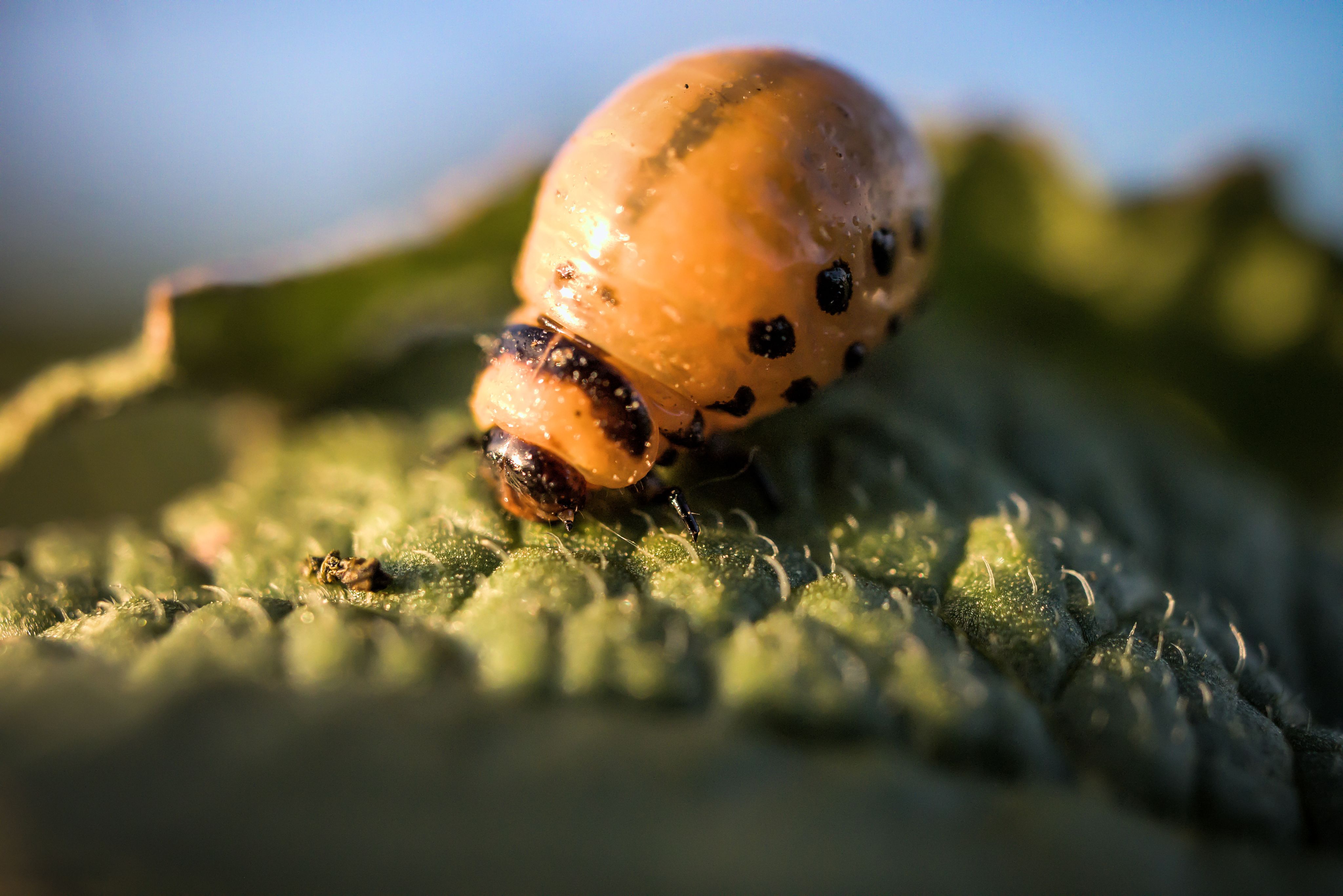

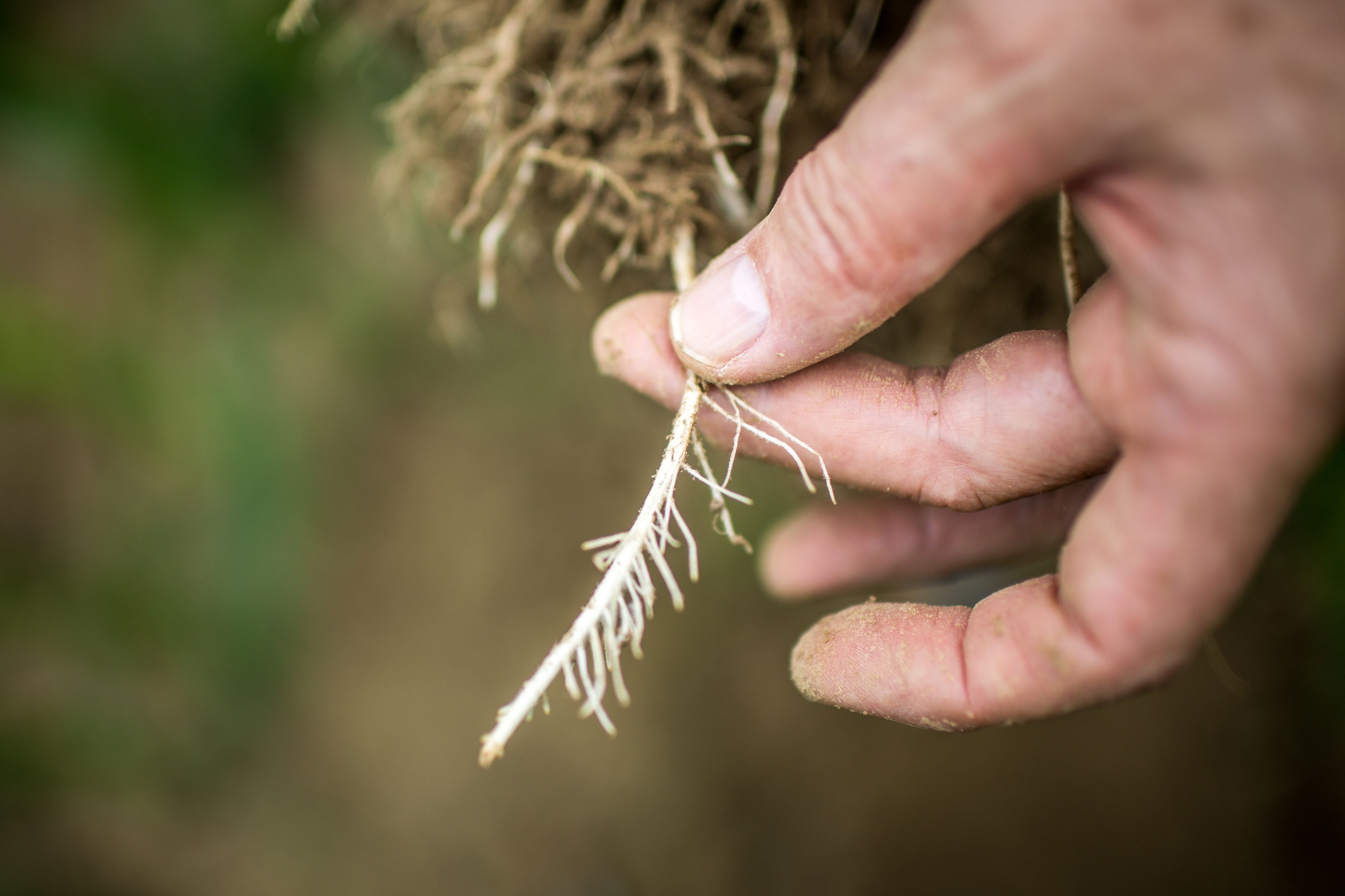


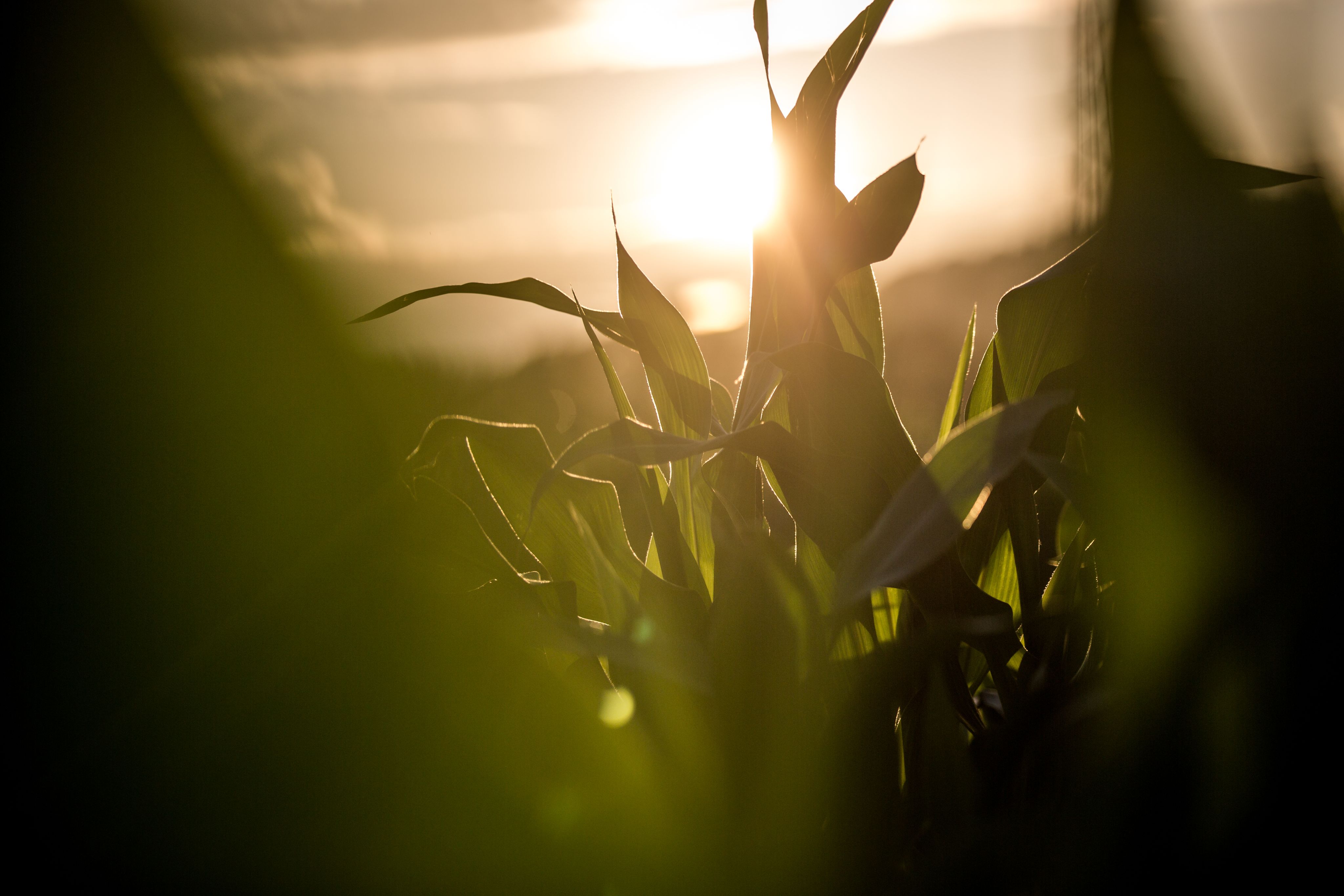





„The art of organic farming is to produce good yields while preserving biodiversity, soil fertility and the climate. To this end, we also have to optimize organic agriculture through research: better breeding, better soil cultivation, better crop rotations, better biological crop protection – all of these can help increase yields.“
An important finding of the long-term study from Switzerland is that soils react slowly, soil research and comparison trials therefore need a lot of time. „During the DOK experiment, we found that differences in the humus content of organic and conventional soils became apparent only after the first 16 years, with noticeable distinctions between mineral fertilizers and compost as fertilizer“, Mäder says. „It then took another six years before the actual differences emerged, depending on the type of organic fertilizer we used: stacked manure, rotted manure or manure compost. If we had drawn conclusions from this trial earlier, we would have come up with wrong results,“ Mäder says. „Now, after 42 years, we can see how the soil quality differs between organic and conventional farming, with a very large impact on soil organisms and soil structure.“
More harvest from poorer soils
When the Rockefeller Foundation sent a man named Norman Borlaug to Mexico in 1944, no one knew that the young agronomist would one day go down in history as „the man who saved more lives than anyone else“. Borlaug’s job was to breed new cereal crops to improve yields. He realized that the plants flourished more abundantly if they were fed fertilizer. Yet, their stalks could no longer hold the weight of their own grains. The stalks would simply bent over. Borlaug crossed in dwarf wheat varieties from Japan, resulting in smaller plants with enormous yields. In the following years, Borlaug's so-called „high-performance varieties“ spread all over the world. In many countries, the harvests of staple foods such as wheat, corn and rice drastically increased from the mid-1960s on thanks to the new varieties. Globally, yields increased almost three times compared to the previous century, saving millions of people from starvation, especially in the Global South.
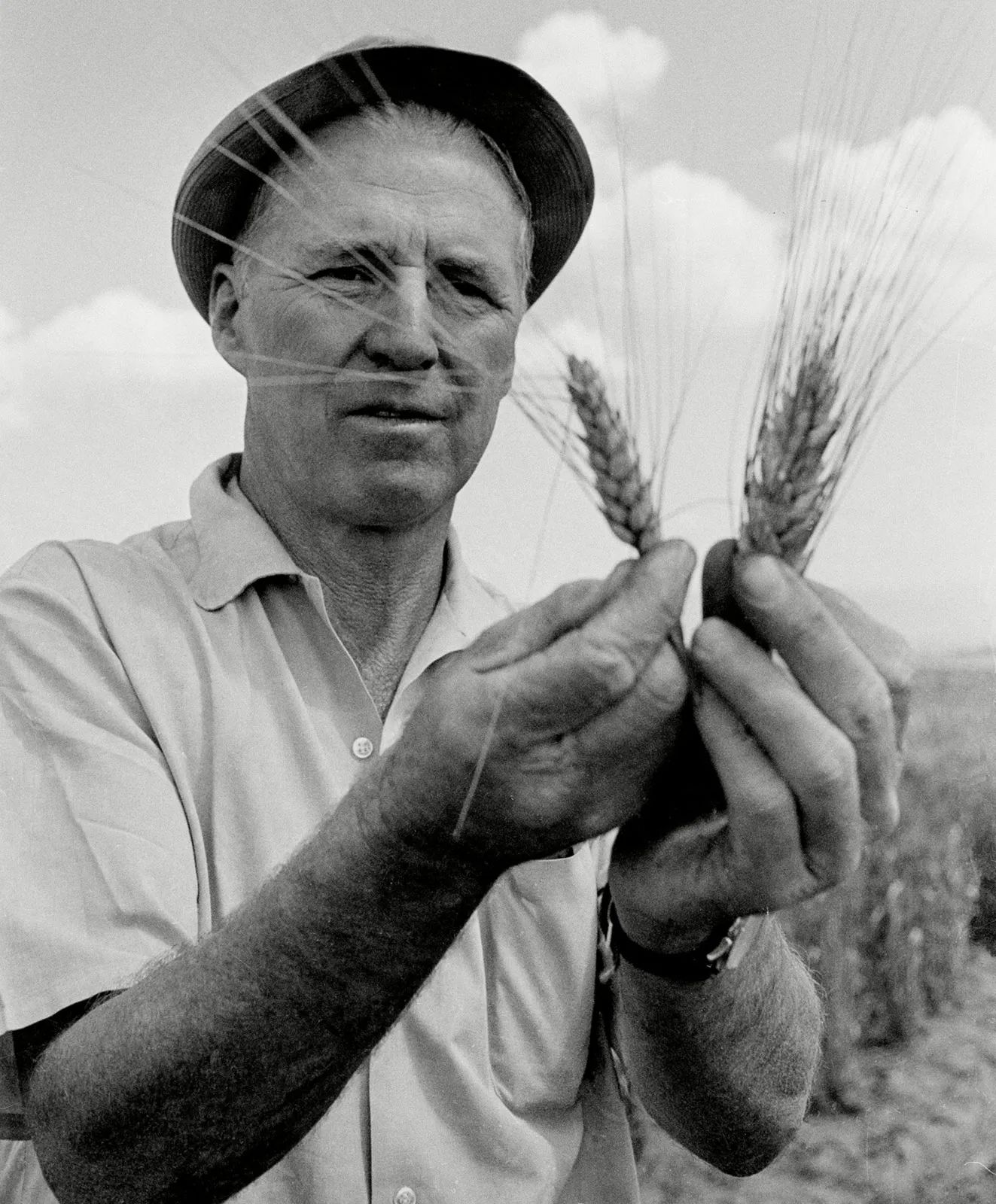
The father of the „Green Revolution“: Norman Borlaug was awarded the Nobel Peace Prize in 1970 for „more than any other single person of this age, he has helped provide bread for a hungry world.“
The father of the „Green Revolution“: Norman Borlaug was awarded the Nobel Peace Prize in 1970 for „more than any other single person of this age, he has helped provide bread for a hungry world.“
But the more the crop yields increased, the more exhausted the soils became. The new „high-performance varieties“ provided their maximum yields only under one condition: the use of artificial fertilizers and pesticides. Critics therefore speak of „high-reaction varieties“ instead – plants that are dependent on the agrochemical industry. The Green Revolution bulldozed the regional peculiarities that had created diverse agricultural landscapes, various cultivation techniques and thousands of crop varieties that were adapted to local conditions. Climate, soil properties and people's dietary habits soon became secondary. The new plant varieties succeeded all over the world – as long as they were fed the external inputs. Thus, the Green Revolution not only enabled previously unimaginable crop yields. It also paved the way for our increasingly standardized global farming system – with all its negative consequences that we are experiencing today. In a 2016 report, the UN Food and Agriculture Organization stated that „the Green Revolution’s quantum leap in cereal production was often achieved at the cost of land degradation, salinization of irrigated areas, over-extraction of groundwater, the build-up of pest resistance, and damage to the wider environment, through increased emissions of greenhouse gases and nitrate pollution of water bodies.“ The FAO further issued a clear conclusion:
„Past agricultural performance is not indicative of future returns. Crop production intensification, based on monocropping and high levels of external inputs, has disrupted biodiversity and ecosystemservices – including crop genetic diversity, soil formation and biological nitrogen fixation – to the point where it threatens the sustainability of food production itself.“
Worn out
The plough and artificial fertilizers drastically increased yields, but they have long devastated the Earth. In the age of the soil crisis, we need to rethink agriculture from the ground up.

Contents
Chapter I
Losing Ground
Preserving soils is not only key in the fight against hunger. Healthy soils also help us to brace the climate crisis, droughts and floodings as well as the mass extinction of species.
Chapter II
Worn out
The plough and artificial fertilizers drastically increased yields, but they have long devastated the Earth. In the age of the soil crisis, we need to rethink agriculture from the ground up.
Chapter III
Green Revolution 2.0
Genetically modified soil microbes, the „intelligent field“ and dubious CO2 certificates: the agricultural industry has discovered soil as a product. Meanwhile scientists unearth the true scale of contamination in our soils.
Chapter IV
Regenerated
The agrochemical industry is eager to avoid restrictions to its farming model, politics are postponing soil protection. Against all odds, the soil-building agriculture of the future already takes shape on more and more fields.

by Marius Münstermann
videos & photos Christian Werner
illustrations Erik Tuckow
editor Wolfgang Hassenstein

Recommended books, podcasts, films & organizations
Jared Diamond - Collapse. How Societies Choose to Fail or Succeed
European Alliance for Regenerative Agriculture (EARA)
European Land and Soil Alliance (ELSA)
Food and Agricultural Organisation of the United Nations (FAO) - Status of the World's Soil Resources (2015)
Life in the Soil - Podcast produced by the FU Berlin's Institute for Biology
David R. Montgomery - Dirt. The Erosion of Civilisations
No-Till Growers - YouTube channel about regenerative farming
Pesticide Atlas - Facts and figures about toxic chemicals in agriculture
Joshua Tickell, Rebecca Harrell - Kiss the Ground (documnetary)
Music used under Creative Commons licences
Betelgeuse - Kunal Shingade
Golden Hour - Lakey Inspired
Filaments - Scott Buckley
Dub Trippin - MK2
Reloaded - Savfk
The Dreamer - Lakey Inspired
The Uprising - Arthur Vyncke
Uncertainty - Arthur Vyncke
Ethereal - Punch Deck
Supported by a fellowship of the

Additional footage has been provided by
BASF - BASF Archive
Bayer CropScience
Julian Chollet, Gesellschaft für mikroBIOMIK e.V.
Deutsches Zentrum für integrative Biodiversitätsforschung / TRICKLABOR
Rolf Derpsch
depositphotos.com
Mark Dümichen, "Wir mögen es grün"
EU Soil Observatory
fortepan.hu / Veszprém Megyei Levéltár/Klauszer
Maria Giménez, Wilmas Gärten
Helmholtz-Zentrum für Umweltforschung
International Maize and Wheat Improvement Center (CIMMYT)
André Künzelmann/Helmholtz-Zentrum für Umweltforschung UFZ
Dorothea Lange / Library of Congress
Ellen Larsson, R. Henrik Nilsson, Erik Kristiansson, Martin Ryberg, Karl-Henrik Larsson: Approaching the taxonomic affiliation of unidentified sequences in public databases – an example from the mycorrhizal fungi". BMC Bioinformatics
Martin Leick
Ignacio Romero Lozano, Forschungsinstitut für biologischen Landbau (FiBL)
Kevin McElvaney
Miguel Á. Padriñán
Pestizid-Atlas 2022 / Umweltinstitut München e.V.
pexels.com
picture alliance / ASSOCIATED PRESS (portrait photo of Norman Borlaug)
pixabay.com
Photograph from 1892 of a pile of American bison skulls
Robert Thompson, University of Reading
Netherlands Institute for Sound and Vision


